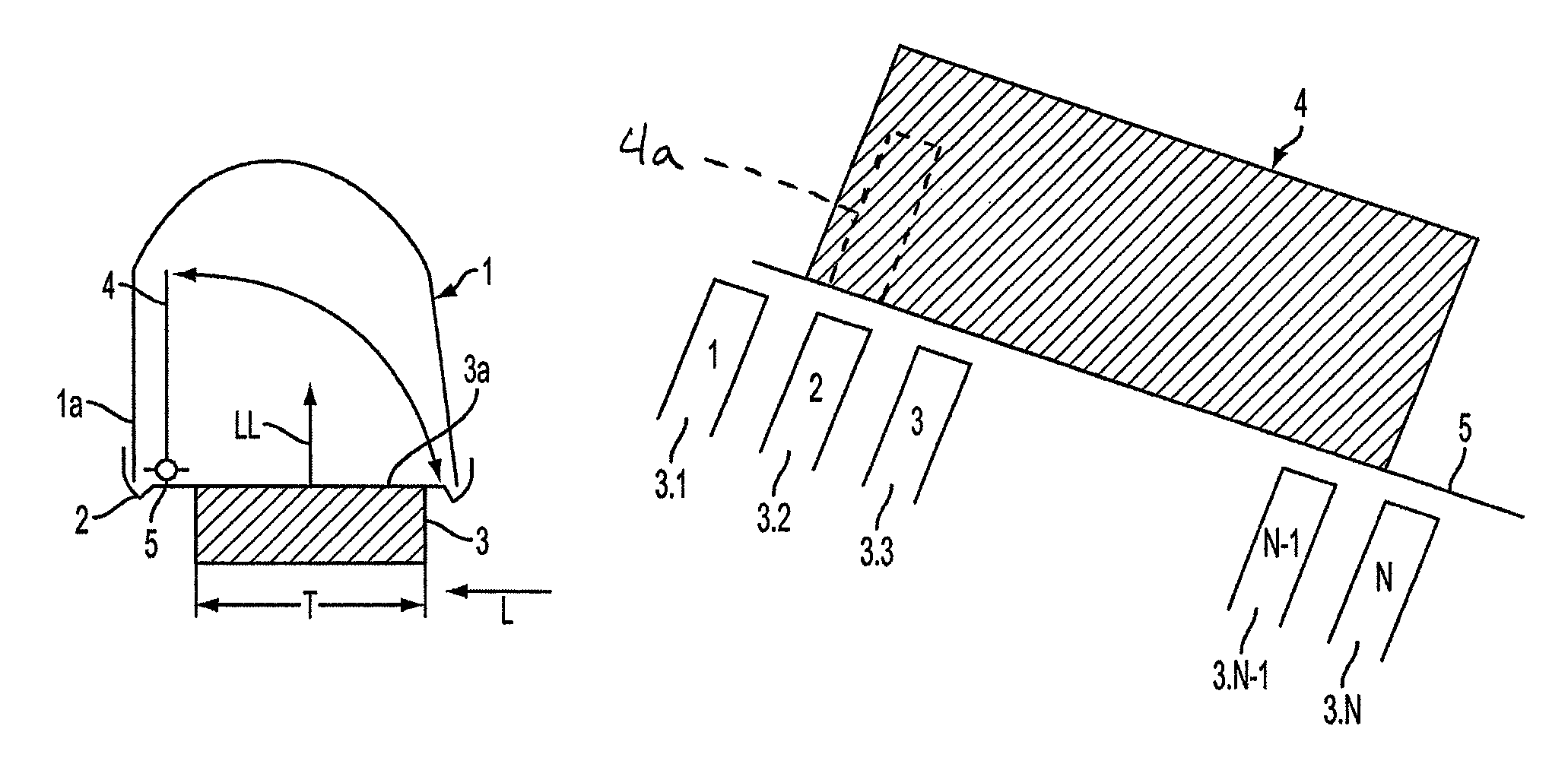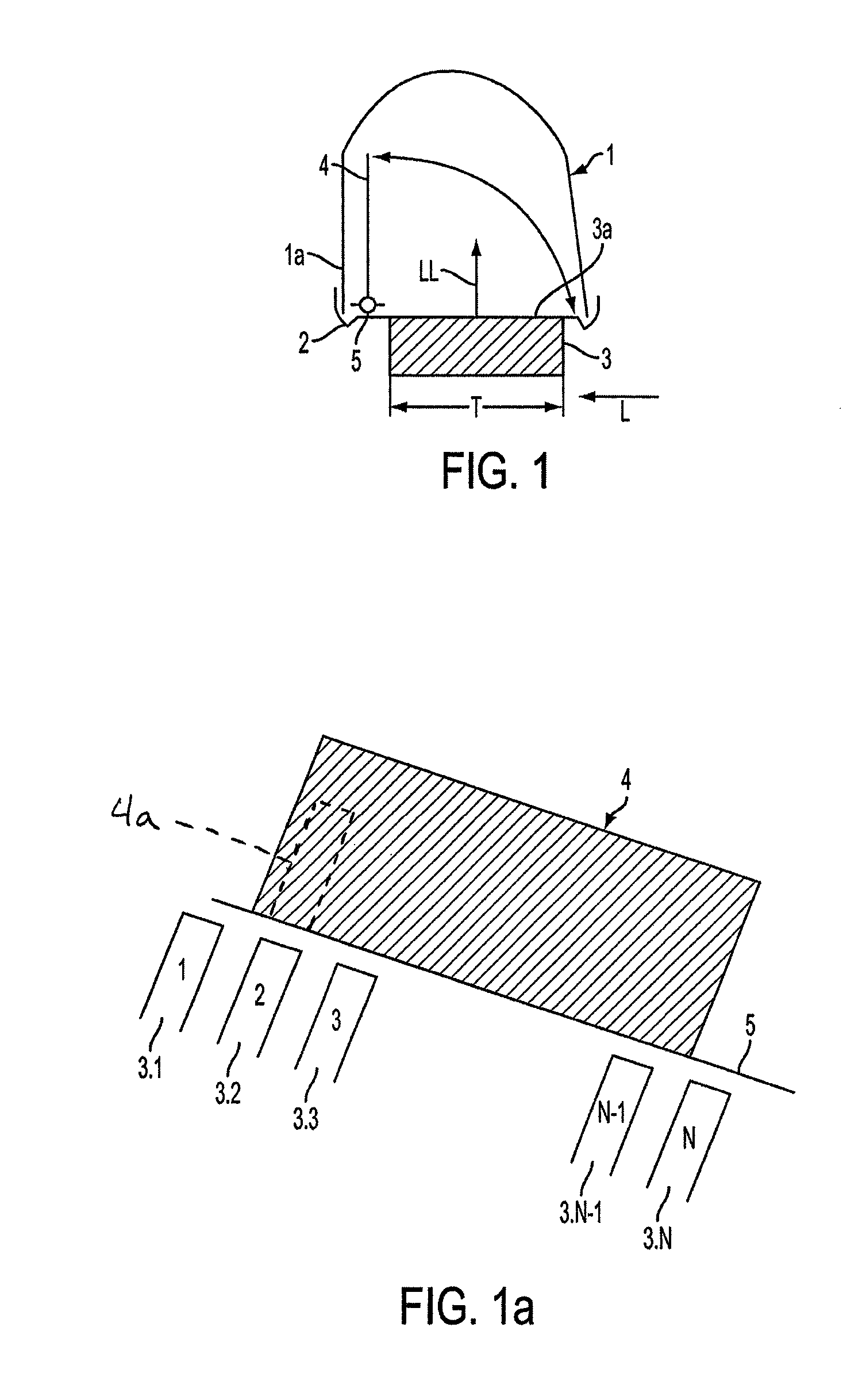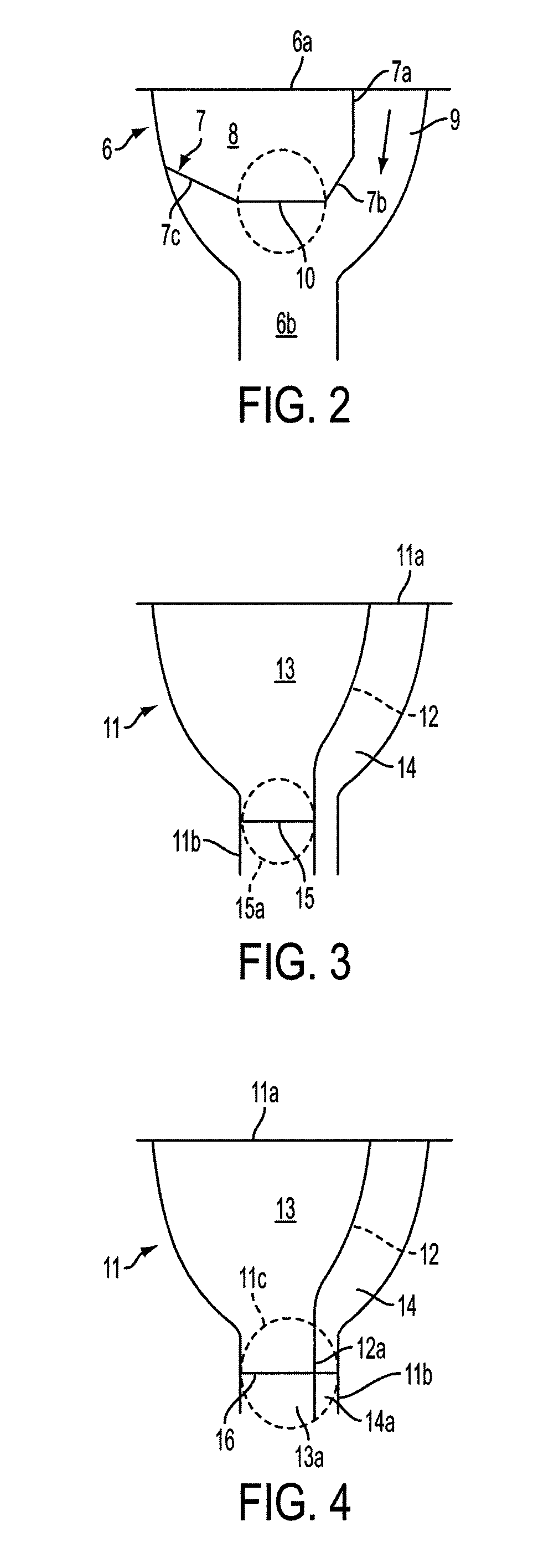Charge intercooler for a motor vehicle
a technology for intercoolers and motor vehicles, which is applied in the direction of indirect heat exchangers, machines/engines, lighting and heating apparatus, etc., can solve the problem of less cooling of emerging charge air, and achieve the effect of reducing the cooling of charge air
- Summary
- Abstract
- Description
- Claims
- Application Information
AI Technical Summary
Benefits of technology
Problems solved by technology
Method used
Image
Examples
Embodiment Construction
[0028]FIG. 1 shows, in a diagrammatic illustration, an air box 1 on the exit side of a charge intercooler (not entirely illustrated) which has a further air box on the entry side (not illustrated). The air box 1, on which an air outlet (not illustrated) is arranged, is placed onto a tube plate 2 and is connected thereto. The tube plate 2 is preferably produced from an aluminum material and has—perpendicularly to the plane of projection—a series of rims (not illustrated specifically) into which tubes 3 are inserted by their tube ends 3a and are soldered. The air box 1 can be produced from a plastic or aluminum material. Accordingly, the connection to the metallic tube plate 2 is a mechanical flared connection or a connection with a cohesive material joint, for example a soldered connection. The tubes 3 have a rectangular cross section, the long side of which with the depth T lies parallel to the plane of projection. Arranged between the tubes 3 are corrugated fins (not illustrated) w...
PUM
 Login to View More
Login to View More Abstract
Description
Claims
Application Information
 Login to View More
Login to View More - R&D
- Intellectual Property
- Life Sciences
- Materials
- Tech Scout
- Unparalleled Data Quality
- Higher Quality Content
- 60% Fewer Hallucinations
Browse by: Latest US Patents, China's latest patents, Technical Efficacy Thesaurus, Application Domain, Technology Topic, Popular Technical Reports.
© 2025 PatSnap. All rights reserved.Legal|Privacy policy|Modern Slavery Act Transparency Statement|Sitemap|About US| Contact US: help@patsnap.com



